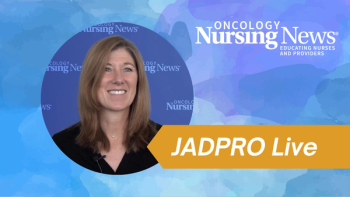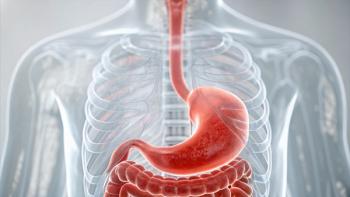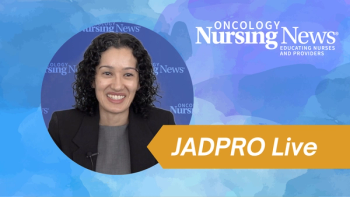
7.5-Year Follow-Up Affirms Nivolumab’s Superiority Over Ipilimumab in Advanced Melanoma
Nivolumab, whether in combination with ipilimumab or as a monotherapy, was associated with improved overall survival, progression-free survival, and melanoma-specific survival, compared with ipilimumab in advanced melanoma.
At a 7.5-year follow-up, nivolumab (Opdivo)-based treatment regimens continued to display superior overall survival (OS) rates, duration of response (DOR), and health-related quality of life (HRQOL) compared with ipilimumab (Yervoy) monotherapy, according to a long-term follow-up analysis of CheckMate 067 (NCT01844505) presented during the 2022 ASCO Annual Meeting.
In the trial, 314 patients received nivolumab/ipilimumab, 316 received nivolumab alone, and 315 received ipilimumab alone. The OS survival rate among those receiving dual immunotherapy was 48% compared with 42% with nivolumab alone and 22% ipilimumab alone. The median OS in these groups was 72.1 months (95% CI, 38.2-not reached [NR]), 26.9 months (95% CI, 28.2-58.7), and 19.9 months (95% CI, 16.8-24.6), respectively.
The progression-free survival (PFS) rate among the 3 cohorts was 37%, 36%, and 33%, respectively. Median PFS was 11.5 months (95% CI, 8.9-10.0), 6.9 months (95% CI, 5.1-10.2), and 2.9 months (95% CI, 2.8-3.1).
Moreover, the median melanoma-specific survival (MMS) rates among the 3 treatment groups were 55%, 47%, and 26%, respectively; however, the median MSS rate was NR in the dual group. Median MMS was not reached (95% CI, 71.9-NR), 49.4 months (95% CI, 35.1-NR), and 21.9 months (95% CI, 18.1-27.4).
The median DOR was not reached in the nivolumab/ipilimumab group (95% CI, 69.1-NR), vs 90.8 months in the nivolumab cohort (95% CI, 45.7-NR), and 19.2 months in the ipilimumab cohort (95% CI, 8.8-47.4).
Furthermore, compared with patients who received monotherapy, patients receiving nivolumab/ipilimumab experienced more time treatment free and were less likely to receive subsequent systematic therapy. The median time to subsequent systemic therapy was NR, 24.7 months, and 8.0 months, respectively. Among patients who were alive at the data cutoff, (138 patients in the combination cohort, 115 in the nivolumab cohort, and 60 in the ipilumumab cohort), 77%, 70%, and 45%, respectively were off study treatment and had not required any subsequent systemic therapy. The median treatment-free interval for these patients was 69.8, 45.4, and 30.3 months, respectively
“At a 7.5-year follow-up, OS and progression-free survival remained superior in the nivolumab containing treatment arms compared with ipilimumab alone,” F. Stephen Hodi, MD, of Dana-Farber Cancer Institute, said in a presentation of the data.
The study authors noted that targeted therapies and immunotherapies have revolutionized the treatment and management for patients with metastatic melanoma. The CheckMate 067 and 069 trials (NCT01927419) were pivotal in establishing the superiority of nivolumab plus ipilimumab in the treatment landscape.
At a 6.5-year follow-up, investigators found that patients with previously untreated, stage III/IV unresectable or metastatic melanoma derived superior clinical benefit with nivolumab/ipilimumab vs with nivolumab or ipilimumab alone. The median OS was 72.1 months, and the OS rate was 49%. Further, the median MSS was not reached, and the MSS rate was 56%. Investigators therefore planned to conduct an additional follow-up after 12 months to evaluate to the long-term efficacy and HRQOL outcomes with the combination.
Overall, 945 patients with previously untreated, unresectable or metastatic melanoma were randomized 1:1:1 across the 3 treatment cohorts and were stratified by BRAF status, AJCC M stages, and tumor PD-L1 expression.
Among those with BRAF mutant tumors, the OS rates were 57%, 42%, and 25%, across the combination, nivolumab, and ipilimumab groups, respectively. Further, in patients with BRAF wild type status, the OS rates were 43%, 41%, and 21%. There was a total of 4 melanoma progression-related deaths across all 3 cohorts.
The overall response rate was unchanged from the 6.5-year analysis, and was 58%, 45%, and 19%, respectively.
The European Quality of Life 5-dimenisons 3-vevel utility index was used to evaluate HRQOL. Findings revealed that the mean changes in HRQOL from baseline were maintained for the durations of therapy in patients receiving treatment, with patients receiving nivolumab monotherapy reporting data for a longer follow-up period. No sustained deterioration in HRQOL following treatment discontinuation was detected. During the treatment-free intervals, HRQOL was maintained, and a few improvement time points were noted for nivolumab/ipilimumab.
Reference
Hodi FS, Chiarion-Sileni, Lewis KD, et al. Long-term survival in advanced melanoma for patients treated with nivolumab plus ipilimumab in CheckMate 067. J. Clin. Oncol. 2022;40(suppl 16): 9522. doi:10.1200/JCO.2022.40.16_suppl.9522


















































































